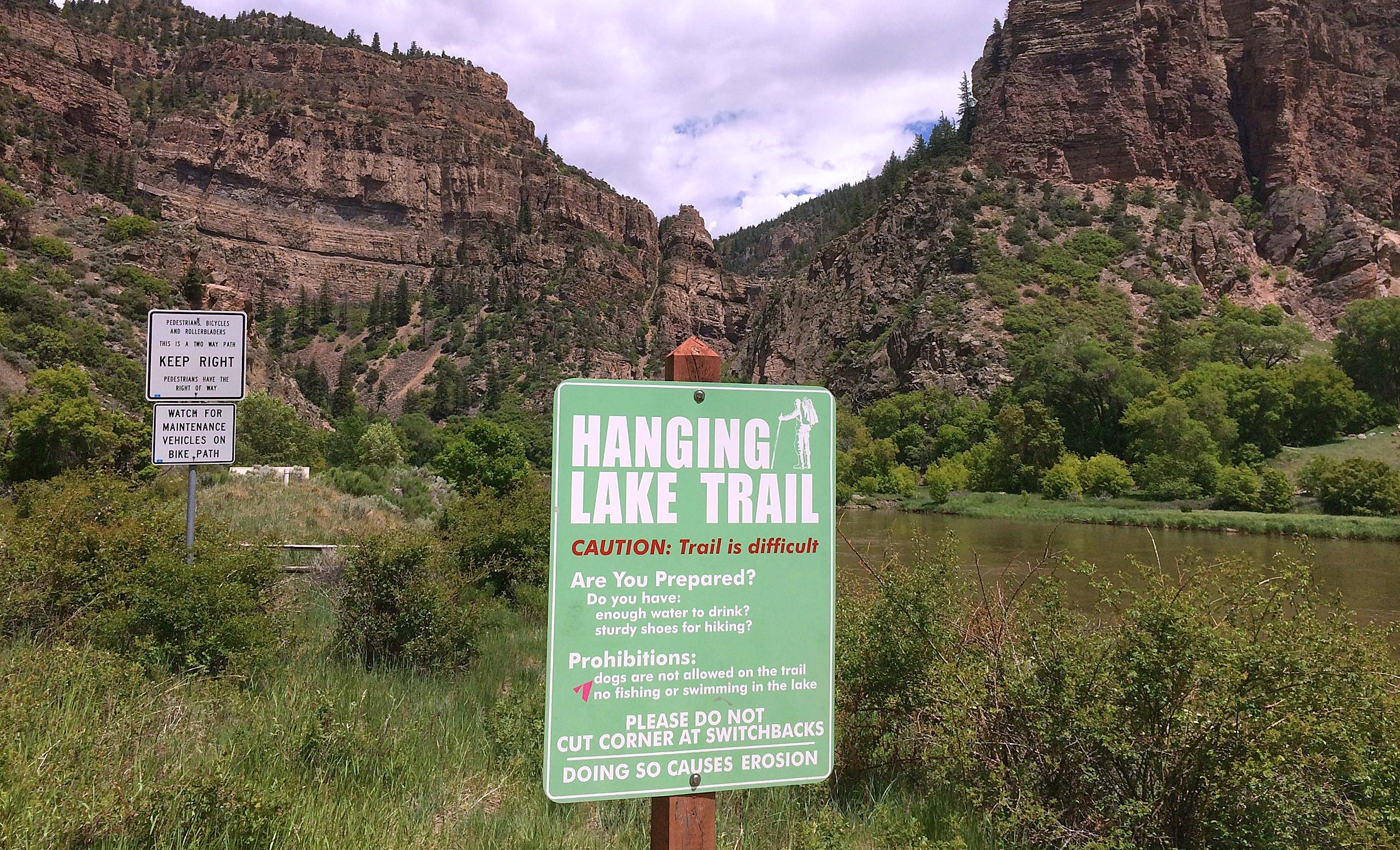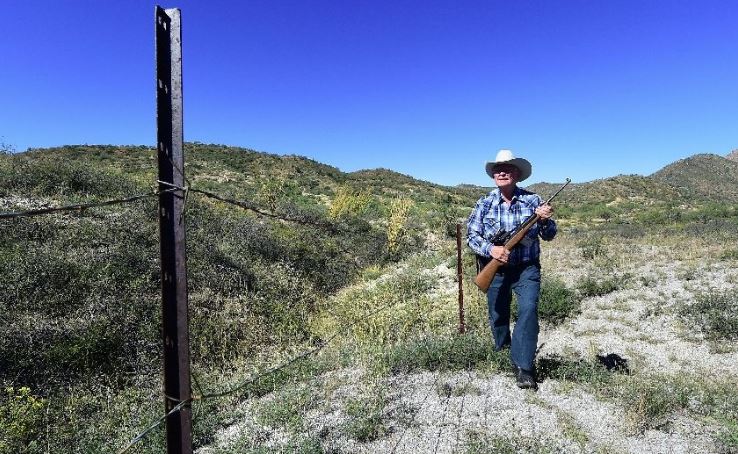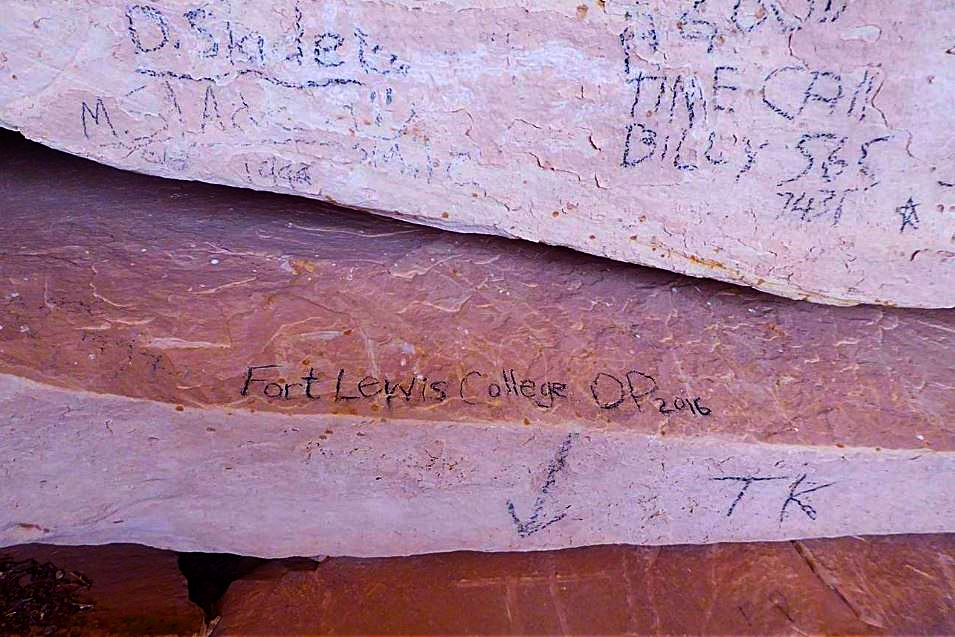Hanging Lake is one of Colorado’s true gems, a turquoise splendor whose beauty is being eroded, officials believe, by a massive increase in user numbers over the past several years.
Chad Abraham
The suspension of Hanging Lake?
A loud bang sounded over the Hanging Lake trail the other day.
A third of the way up the path, Marcia Gilles, deputy district ranger in the Eagle-Holy Cross Ranger District, stopped and looked up. With the sun just peeking over the 1,000-foot walls of Glenwood Canyon, two BASE jumpers had launched off the cliffs above the trail. The sound was apparently a parachute opening, which was followed by an excited whoop from the jumper.
“That’s a first,” she muttered.
Gilles pondered a moment, wondering where they would land. She said she wasn’t sure whether it was entirely legal and that they were alighting on the path between the trailhead and the parking lot, or in the lot, possibly injuring someone, concerned her. That parking lot has enough going on without people descending into it from the sky.
Hanging Lake is one of Colorado’s true gems, a turquoise splendor whose beauty is being eroded, officials believe, by a massive increase in user numbers over the past several years.
Obtaining one of the 110 parking spots is akin to getting into a hot, new restaurant, as 800 to 1,000 people a day in the summer want one. Wait times can approach an hour, and if the line of vehicles starts to back up onto the exit off Interstate 70, as it has occasionally to the alarm of state transportation officials, the parking lot will be closed and people turned away.
Next month, the U.S. Forest Service plans to unveil an adaptive management plan for Hanging Lake for public comment. It could include requiring hikers to obtain a permit or a reservation to hike, take a shuttle from Glenwood Springs or Dotsero, or bike to the trailhead. The latter is already happening in droves, much to the delight of Forest Service personnel managing the parking lot, an area often filled with frustrated motorists eager to see the beautiful pond and its waterfalls.
But people biking to the trailhead is just a drop in the bucket when it comes to ensuring Hanging Lake continues in its pristine state for generations to come, leading to the proposed management plan that Gilles said has been “in the works for years.”
The goal is “to change behavior that is detrimental to the resource,” she said, adding the plan involves the Forest Service, the Colorado Department of Transportation, Garfield County and the city of Glenwood Springs tourism promotion board.
After all, people biking to and then hiking up the area, while lessening the parking situation, are still impacting the trail — and adding to the local economy. As such, one aspect of the adaptive management plan will seek comment on limiting how many people a day can visit Hanging Lake.
The weight of the wait
Gilles worked as a ranger in southern Utah before her current gig. Last summer, she and her family drove into the Hanging Lake parking lot. Told of the wait, they decided not to stick around.
But she said getting that experience as a user of a national treasure was invaluable, as she now readily understands the frustration of people who — having driven for hours from the Front Range and elsewhere —are forced to wait, or who turn around given the length of time before they may hit the trail.
The adaptive management plan, and its possible limitations on users, is needed because of Hanging Lake’s popularity, Forest Service officials say.
Enlarging the parking lot is an oft-asked question. But it isn’t feasible, as the property involves multiple owners, including Holy Cross Energy, CDOT and Garfield County, and, as summer ranger Melisa Droz Ortiz noted, “Imagine if we made a bigger parking lot: That’s going to be really bad for the trail and the lake.”
Just before 8 a.m. on Friday, a driver asked fellow ranger Meredith Cross if they had arrived early enough to secure a spot. No such luck: The lot was already full, the wait 40 minutes or so.
Some people show up at 5 a.m. to get a spot, Droz Ortiz said.
“It can get crazy,” she said, before guiding a driver into one of the day’s many three-point turnarounds in an area ahead of the parking lot that’s reserved for emergency response. A dozen more vehicles awaited parking spots.
Marcia Gilles, deputy district ranger in the Eagle-Holy Cross Ranger District, speaks with a group of hikers at Hanging Lake. She fields inquires about everything from why swimming is prohibited to the location of a gondola for the descent.
Because of the crush of visitors, steps have already been taken. Droz Ortiz and Cross were working near a small wooden shed, which contained a sign saying the parking lot is full (displaying that means the line of vehicles is approaching a bridge close to the I-70 exit), and a crossing guard barrier — new infrastructure put in place in recent years to try to manage the crush of cars.
The federal steps are in response to the number of Hanging Lake visitors increasing nearly 50 percent since 2014, which saw just under 100,000 people. In 2016, the figure, based on trail counters, rose to nearly 150,000. That is close to double the 78,000 visitors to Hanging Lake in 2012.
One result, besides more trailside waste, is waiting in line near the top for the iconic lake. Bottlenecks are common at the steps just below, as people, many inexperienced hikers, head up and wait for those descending, and vice-versa.
“People don’t want to hike like that,” Gilles said.
The Forest Service used a $1 million grant in 2009-10 to replace near the top a rope, which guarded against a fall into Dead Horse Canyon, with metal railing.
But the human traffic jam continues: In the White River National Forest, the most visited in the nation, the lake is second in visitors only behind the Maroon Bells.
Social media helps spread the word
Gilles said she believes social media has played a part in Hanging Lake’s popularity. It’s also helped to socially shame people acting illegally at the site. Hikers, for instance, walk out on the lake’s iconic log — a Brazilian company apologized in June after a photographer and models went into the lake — or swim in the pond, a fragile ecosystem damaged by sunscreen and oils on human skin.
It’s hard to underscore how remarkable the Hanging Lake hike is, and why the site, which is designated a National Natural Landmark by the National Park Service, is so popular. The trail ascends adjacent to the gushing Dead Horse Creek, which also provides idyllic resting points next to small waterfalls, for a mile-and-a-half. It’s rocky and steep in places, and takes many by surprise.
But “people love this place and want to take care of it,” Gilles said.
[wp_ad_camp_1]
Hers is a smiling, welcoming face on the trail. She spoke to many people, and her presence and that of the summer rangers is also a relatively new aspect of Forest Service outreach and tacit enforcement. Five to seven of them are hired for the summer, alternating between parking lot and trail duties. They answer all types of questions, and inquire about hikers’ abilities, whether they have enough water and the like.
Summer aside, Hanging Lake is so popular that the Forest Service last winter had for the first time a winter-season ranger. The person was on site to gauge the cold-winter use, which has increased because of the uptick in the use of crampons. A winter ranger may be back when the weather turns colder in a few months, Gilles said.
On Friday, she asked a group descending near the top whether it was worth the effort.
“It was absolutely worth it,” one enthused.
And therein lies the dilemma.
No fly zone
At the main Hanging Lake viewing point, Denver resident Jackie Bretl said she wasn’t surprised by the parking lot situation. She had waited 15 to 20 minutes for a spot, she said.
But months prior, she and her husband were turned away, and parked at the Grizzly Creek camping area. They managed to hitchhike to Hanging Lake but then had to walk 6 miles back to Grizzly Creek. That “wasn’t very fun after” hiking Hanging Lake, she said.
As for a permitting system, Bretl urged that any potential permit or reservation system be well advertised, noting the nearly three-hour drive from Denver for her and out-of-town guests.
To drive such a distance and be turned away is rough, though it’s already happening. Gilles reiterated that the goal is to protect a “really fragile ecosystem” in a way that reduces congestion and public-safety concerns, and improves the visitor experience. Residents will get to weigh in starting next month.
As for the BASE jumpers who floated down from atop Hanging Lake, they could have been issued citations, Gilles said, though the rangers weren’t sure where they landed.
“That’s definitely frowned upon,” she said, citing the possibility of endangering others’ safety. “They could have kicked off rocks. If their chutes didn’t deploy, they could have landed on somebody.
“There’s just a lot of people down there.”
Free Range Report
[wp_ad_camp_3]
[wp_ad_camp_2]




Ah shame, you mean people are going to the national parks? What are the parks for? “She said she wasn’t sure whether it was entirely legal and that they were alighting on the path between the trailhead and the parking lot, or in the lot, possibly injuring someone, concerned her. That parking lot has enough going on without people descending into it from the sky. ” Well if one is not sure one doesn’t issue a ticket, do they? Is base jumping prohibited or not? Just because someone else doesn’t want to base jump doesn’t mean it is not allowed. The parks are just as much for the base jumpers as anyone else. ““That’s definitely frowned upon,” she said, citing the possibility of endangering others’ safety. “They could have kicked off rocks. If their chutes didn’t deploy, they could have landed on somebody.” So now there is no climbing in the park? Is that posted as well.
We really don’t care what is frowned upon by some ranger suffering from a Wyatt Earp syndrome. If rock climbing and base jumping is prohibited, then make it part of the rules and make it so. Until then, put up with it. Base jumpers need a place to practice their sport as well. Yellowstone has 3.6 million visitors a year. So if Hanging Lake is crowded then make adjustments by enlarging the facilities or limiting the people. But that defeats the purpose of having parks doesn’t it? Some people won’t be satisfied until there is a paved trail in every park and one must stay on it. That defeats the purpose of the park doesn’t it?